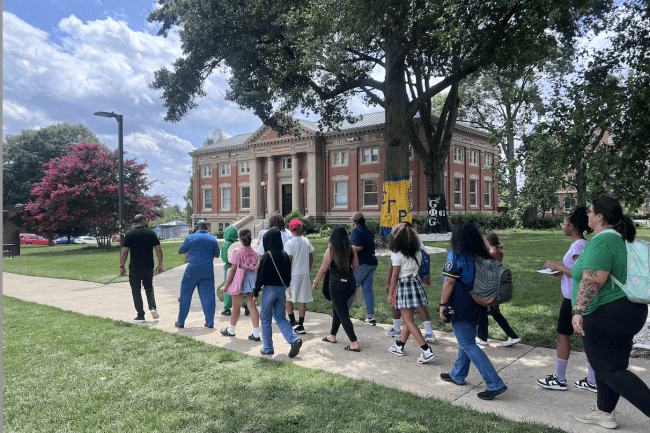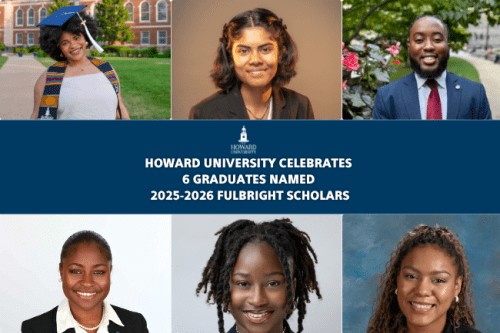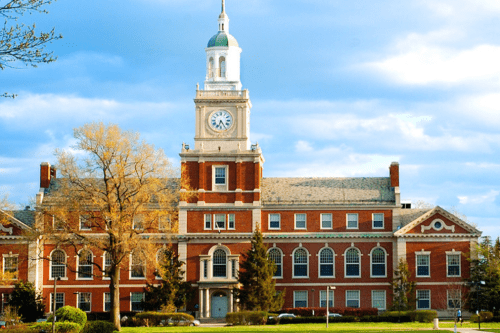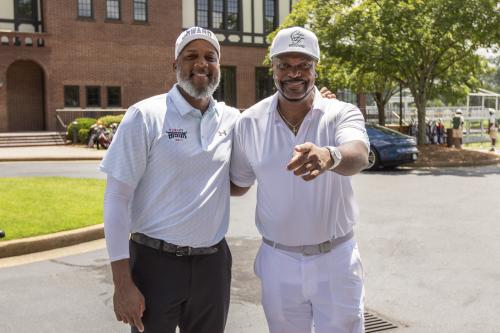When Dr. James Murray first visited Howard University, it wasn’t as a student, but as a speaker invited by the Quantum Biology Lab (QBL) after earning his Ph.D. As he stood on campus for the first time, surrounded by Black excellence in science and mathematics, a new vision took hold, one which he is now implementing as the Intern Coordinator and K-12 Liaison for the QBL.
In contrast to his undergraduate years at the University of Maryland, where few in STEM looked like him, Howard felt like the community he hadn’t known he needed. “If I had been here as an undergrad,” he recalled, “maybe I would have done something different. I didn’t have people who looked like me, who loved me, who would have inspired me to go even further in math and science.
From that moment, a purpose crystallized: to ensure that students — especially Black and Brown students in underresourced schools — see themselves in science early and often. That calling now fuels his work for the QBL, where he helps create mentorship pipelines that stretch from elementary classrooms to tailored research experiences for QBL undergraduate and graduate interns.
This vision sparked the creation of the Quantum Math Camp, held at Feltonville School of Arts & Sciences in Philadelphia and designed to equip rising first through seventh grade students with a love of math, an introduction to quantum science, and a glimpse of what’s possible when their brilliance is nurtured. A full-day trip to Howard University offered hands-on STEM activities and a guided tour of the campus that further enriched their experience.
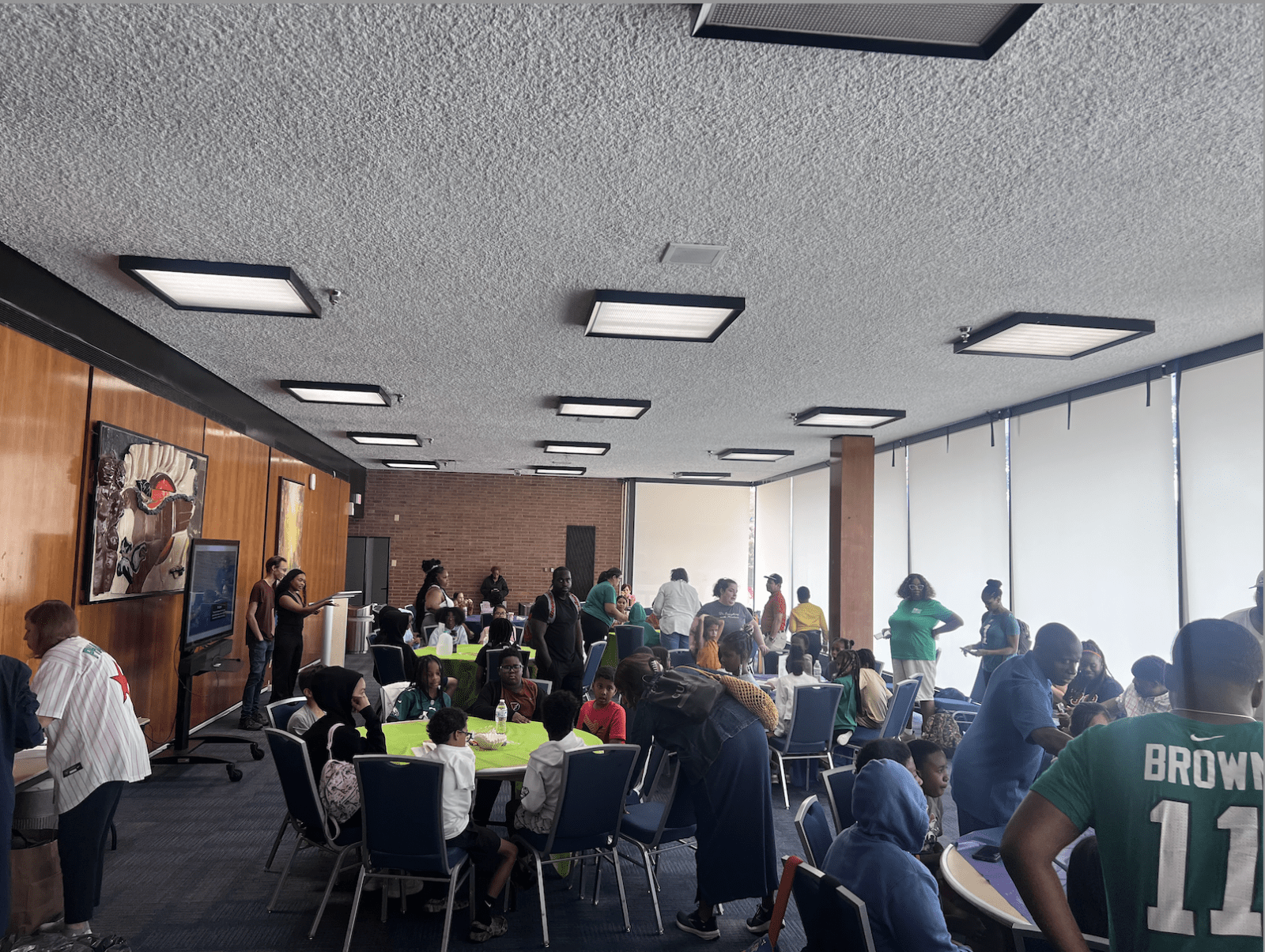
For Corinne Zacharia, a returning teacher in the program, the experience has reshaped her own approach to education.
“This is my second summer teaching rising sixth and seventh graders, and what brought me back was the chance to focus on the students who are already excelling,” she explained. “In the classroom, so much attention goes to those who are struggling. This camp flips that — it gives these high-flyers the time and space to soar.”
Zacharia emphasizes that students aren’t just learning rules — they’re learning why the rules work. “So many of our students are rule-memorizers, and they’re great at it. But here, we dig deeper. Why does a negative times a negative equal a positive? That’s something we have time to explore.”
Beyond math, the camp gives students a hands-on look at the wonders of the physical world. During their full-day trip to Howard University, students explored scientific phenomena through engaging experiments: using polarizing filters and layers of clear tape to reveal hidden rainbows, discovering why kinetic sand behaves like a liquid yet feels dry, and observing shape memory metals return to their original forms when heated. Back in Philadelphia, students were introduced to magnetoreception — a quantum phenomenon that may explain how birds navigate using Earth’s magnetic field. They investigated why birds fly, how planes stay aloft, why the sky appears blue, and why blue light carries more energy than red. One standout activity, Tasting Quantum Biology, invited students to build edible radical pair models and explain, one sweet step at a time, how quantum entanglement might guide bird migration.
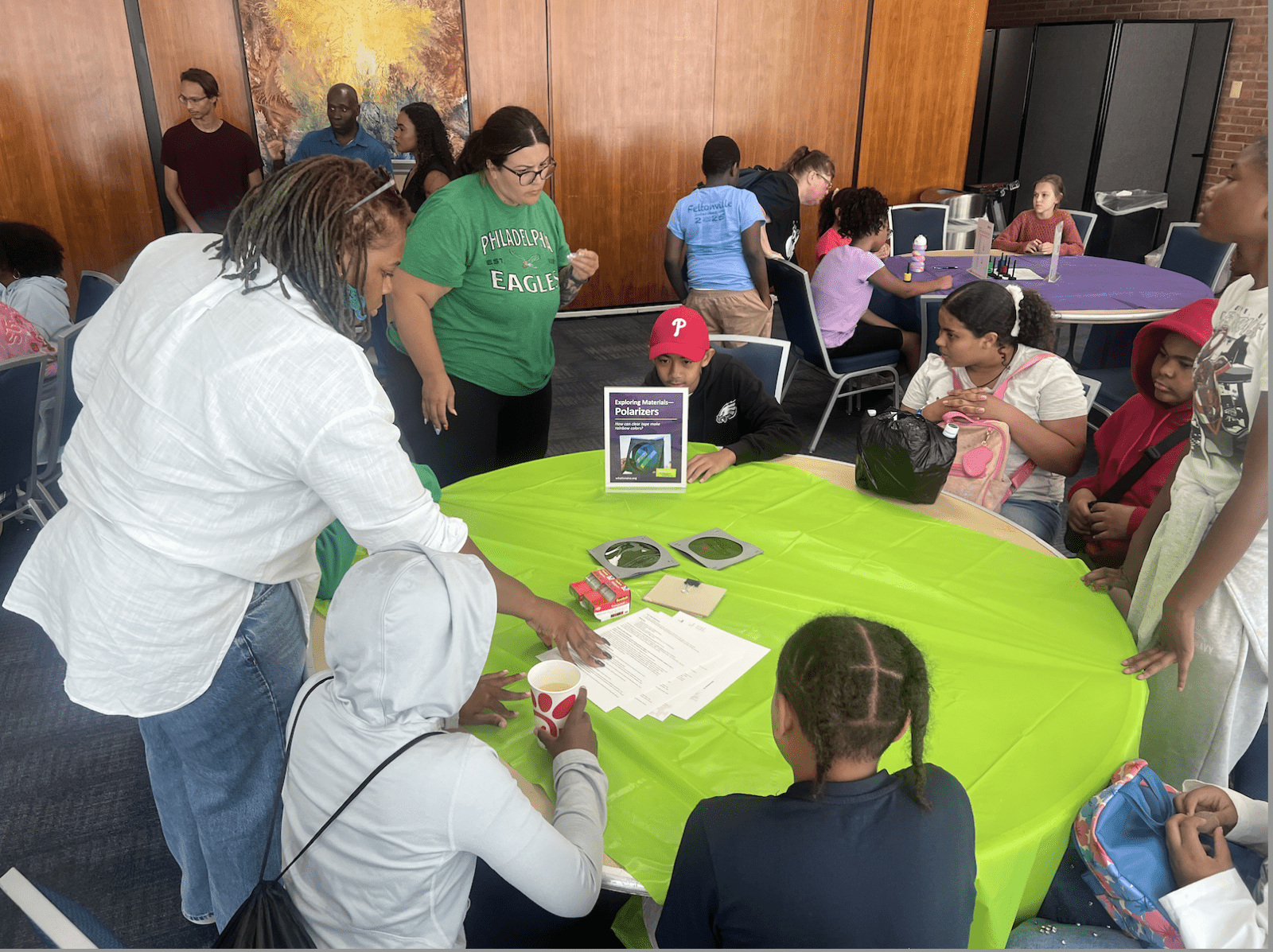
More than academics, the camp provides students with the rare opportunity to prepare meaningfully for the year ahead — and for the years beyond. “Coming to Howard’s campus is eye-opening,” said Zacharia. “For many of my students in the Feltonville neighborhood of Philadelphia, college is just not talked about in the way it is in other places. But here, they see it. They walk the halls. They meet students who look like them. And they start to imagine a future beyond high school.”
One of those students now inspiring the next generation is current Howard graduate student Rania Jones. Her journey from aspiring writer to medical physicist is a story of unexpected turns and unshakable perseverance.

“I didn’t even like science until my senior year of high school,” she confessed, laughing. “I wanted to be a writer. I loved English. But when I lost both of my grandmothers to strokes, three months apart, something shifted. I didn’t know what kind of medical professional I wanted to be, but I knew I wanted to make a difference.”
Her path included applying to Howard as a biology major — just to see if she could get in. She didn’t know what she wanted to do with the degree at first, even considering marine biology just because she loved National Geographic. But through loss and exploration, her purpose clarified. Her journey took her to internships in California and South Carolina, including a forensic science lab where she tested her own DNA. “It was wild cool, but also kind of scary because now the police have my DNA,” she joked.
Still, when she first applied to the prestigious Quantum Biology Lab, she didn’t get in. “It was an ego death,” she said. “But I spent that summer building experience in any way I could. When Dr. Murray encouraged me to apply again, I hesitated but I said yes.” That second application changed everything.
She got the spot. And now, she’s pursuing a degree in medical physics, a path she never imagined when she started college simply wanting to play lacrosse a little longer. “I get to save lives now,” she said. “That’s so cool.”
Her message to students was simple but powerful: “Say yes. Say yes to everything. You might love science now and end up a mathematician. The world is your oyster. And listen to your parents; they’re your best friends, even if you tell them too much like I do.”
Murray and his team dream big. With support from the IBM-HBCU Quantum Center, the Quantum Math Camps are growing, but the long-term vision includes a year-round program that follows students from first grade through seventh, supporting up to 200 students annually with advanced math instruction and quantum exploration.
Each year, students delve into real scientific phenomena — magnetoreception, photosynthesis, and next year, superradiance in protein fibers. The curriculum is challenging but accessible, intentionally designed to engage young minds and stretch them toward careers they might have never envisioned.
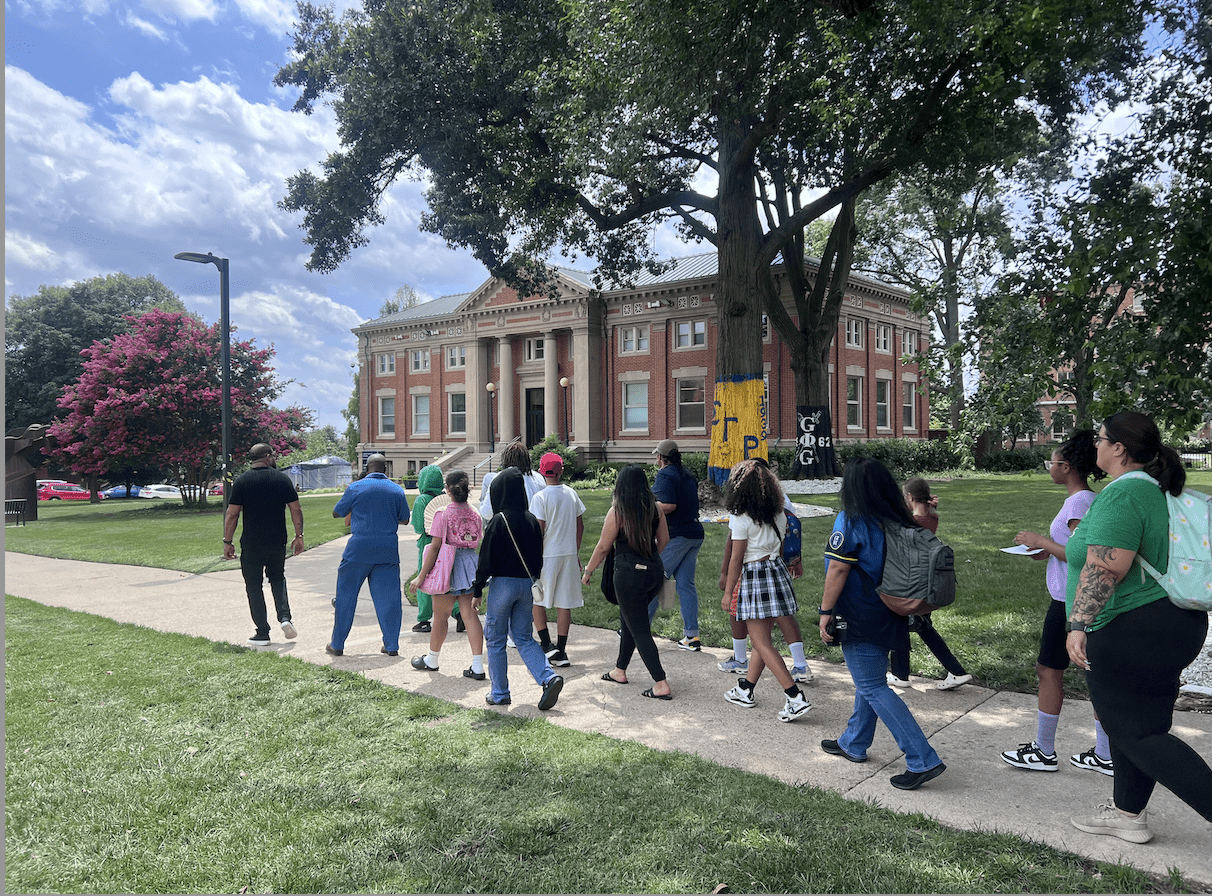
“This isn’t just about summer,” said Murray. “It’s about building quantum thinkers for the future from kindergarten to graduate school.”
And indeed, in the labs, classrooms, and campus lawns of Howard, the seeds are already taking root. Young students walk with confidence through academic halls, inspired by the mentors guiding them, challenged by the curriculum before them, and encouraged to dream as boldly as science demands.
The next generation of STEM leaders isn’t on the way. They’re already here.

